By Bob Swain
In November 1541, roughly three years before the Siege of Boulogne, King Henry VIII of England suffered one of the most severe shocks of his life when he was shown a report alleging that his plumpish 19-year-old queen, Catherine Howard, had been intimate with other men before their marriage. Even more upsetting, it seemed that she was still being unfaithful to the king under his very nose. At first disbelieving and then stunned, Henry became unhinged by the unfolding reality of Catherine’s unfaithfulness. He called for a sword and bellowed out his intention to kill her, but was he restrained by his worried courtiers. Visibly diminished by the experience, Henry withdrew from London to nurse his bruised ego in near seclusion, while his government prosecuted Catherine for treasonous behavior.
Always a heavy drinker, King Henry VIII drank even more than usual during his self-imposed exile, and in the process he aggravated the pain from a chronic ulcer on one of his legs. The king’s once-handsome physique sagged ominously, and by the start of the New Year he was nearly immobilized by his aching leg, accompanying fever, and profound depression. The dismal winter weather did nothing to help the situation. Henry sat alone, listening to his harp player or talking with Will Somers, his fool, while his unfaithful former wife was duly beheaded before a small group of witnesses on the grounds of the Tower of London.
A New Foreign War and the Siege of Boulogne
As the weather improved, moods brightened for King Henry VIII of England. He began to mull over a favorite action of many monarchs beset with troubles: provoking a foreign war to distract their subjects from the prevailing embarrassment or crisis at home. It was a comforting thought for Henry, given his decades-long appetite for foreign adventure and military glory. And reasons for starting a war were easy enough to come by, particularly with France to pick on, something he had done twice before.
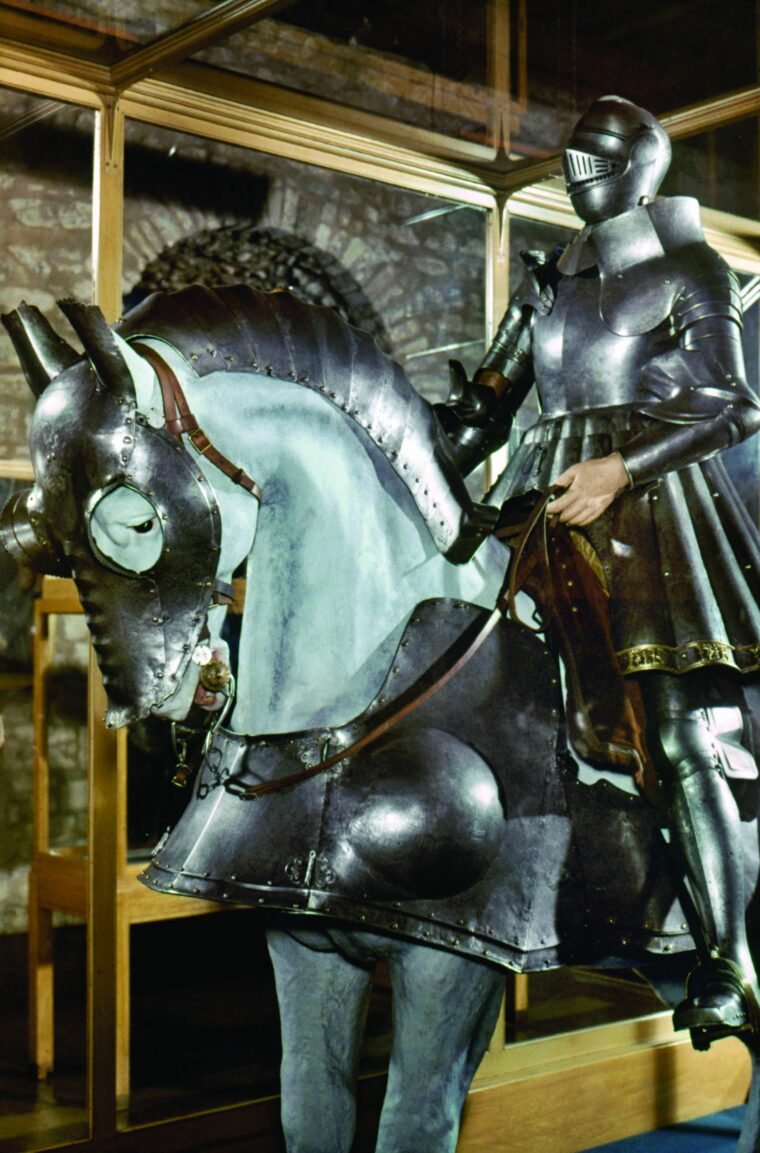
Sufficiently stirred, Henry assembled his Privy Council in London. His sense of timing was perfect. Henry’s counselors were relieved that the king was finally interested in talking about something other than the late queen. Facing them with more majesty than he truly felt, Henry insisted that the country must seize the opportunity to wage war with her long-standing enemy, France, while the French were distracted by Spain over the issue of who would control northern Italy. Of equal importance was the opportunity to force the French monarch, Francis I, to renew his payments of Henry’s pension and other obligations under past treaties, dating back 17 years and amounting to 25,000 pounds annually.
Henry surprised the Privy Council and others at court by announcing that he intended to personally lead the invasion of France. To his astonishment and annoyance, the council objected strongly to his leading forces in battle (although he had done so briefly in 1513) and Spanish-born Charles V, the Holy Roman Emperor, who was negotiating an agreement to invade France with England as his ally, joined in the council’s opposition. To win support for his self-appointment, Henry let it be known that he wanted the venerable Duke of Norfolk and the Duke of Suffolk to serve as his principal aides, despite Norfolk’s recent lackluster performance in Scotland. Henry announced that Norfolk was to command the vanguard, assisted by the veteran Lord Russell, while Suffolk, in a replay of Henry’s first invasion of France in 1513, would assist Henry with the main body of the army.
The announcements reassured Henry’s critics and placated the dukes, who dutifully fell into line behind the king and began to arm at their own expense the required 300 mounted knights and 1,000 men-at-arms each nobleman was expected to furnish to the king. Meanwhile, Henry mollified many in Parliament by agreeing to have the Crown contribute funds from the renewed sale and rent of royal lands.
In mid-February 1544, Henry signed an agreement with Charles V to become allies against France. To avoid tipping their hands prematurely to Francis I, the rulers agreed to keep the pact secret until the end of May. The agreement articulated a goal of jointly taking Paris, with an English army striking through Picardy and Charles’s army approaching from the Netherlands into the Champagne-Ardennes area.
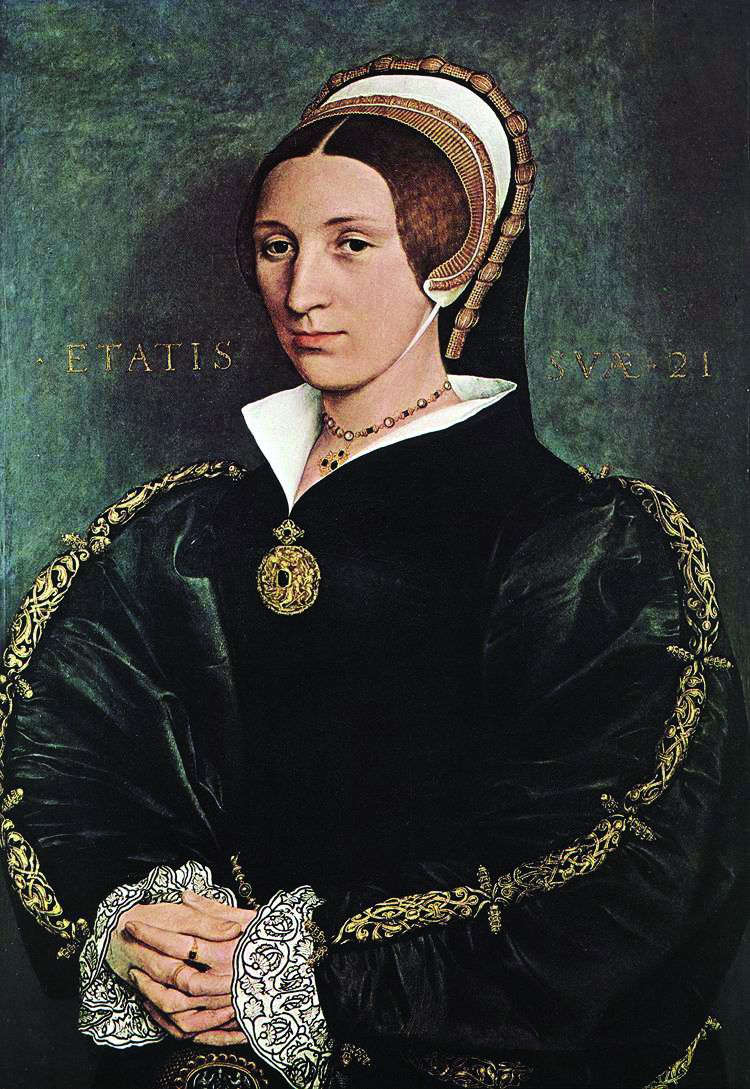
The Invasion Proceeds
Henry sent an ultimatum to the French ambassador in London that June, threatening war within 20 days for the recovery of the realm of France, a goal first voiced by Edward III two centuries before. The ultimatum contained a long list of impossibly difficult conditions to obviate the need for war. Not waiting for a reply, Henry recalled his ambassador from Paris and ordered the English commander at Calais to begin transferring 5,000 men-at-arms under Sir John Wallop to aid Charles V’s invasion of France from the east, but with strict orders to husband his artillery and ammunition.
Both Henry and Charles pledged armies of 40,000 men apiece for renewed action against France. Henry vowed to lead his troops along the Somme to Paris, while Charles would approach Paris from the east. Henry renewed his intention of going to Calais after Norfolk and Russell had established the 10,000-man vanguard there, despite warnings from the king’s doctors that a rigorous military campaign could shorten his life. Henry’s enthusiasm knew few bounds, and he was determined to fit his corpulent bulk into newly crafted armor (made imperative since Henry’s waistline had ballooned from 37 to 54 inches in the past six years). Tirelessly he involved himself in the many details of the upcoming campaign, visiting the Tower mint, where workmen were turning silver plate and other precious ornaments into coins to pay suppliers and soldiers, and worrying about inventories.
Unlike earlier invasions, great quantities of foodstuffs and fodder were sent ahead to depots surrounding Calais to feed an expected main force and rear guard of 30,000 men (including 4,000 foreign mercenaries hired for the occasion), while additional flour mills and baking ovens were built near the depots. When Norfolk and Russell were ready to move the vanguard across the Channel, they were greeted at dockside by a fleet of colorfully decked-out ships awaiting the cumbersome boarding of men, horses, and matériel.
Norfolk’s Pleas to the Council
After an uneventful trip and landing, Norfolk reassembled his men, supplies, and horses and prepared to move southeastward from Calais. But without a specifically established goal beyond the original injunction to take Paris, it seemed pointless to proceed far, and this left the duke with little to do except maintain discipline and sort out supplies in his makeshift camps. Easily frustrated, Norfolk could not resist sending a sharp note back to the council, reminding the members that he had expected to know his primary objective before now.
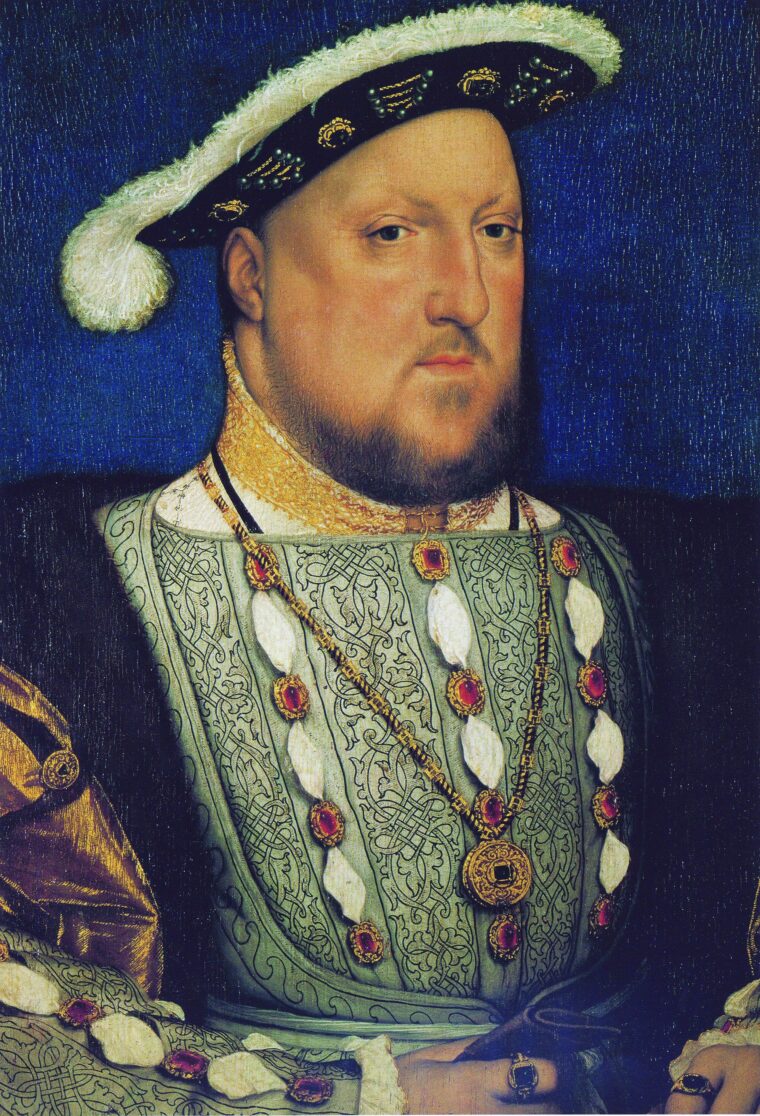
Prodded by the irascible Norfolk, the council finally replied, explaining that Henry had been distracted by another flare-up of his ulcerated leg. Meanwhile, Norfolk laid siege to the town of Montreuil, 40 miles due south of Calais. At one time, Montreuil had been one of the wealthiest ports in northern Europe, but the river had silted up in recent years and port activity had declined. If Montreuil had been picked as an easy target, however, Henry and his council had badly misread its present strength. Montreuil’s garrison, situated above the Picardy floodplain, was safely behind stout medieval walls and armed with a more than sufficient number of cannons.
Norfolk continued to bother the council with a stream of complaints focusing on the disorganization at Calais and the shortages of bread, beer, guns, and shot for his camp at Montreuil. In addition, the wagons arriving from Charles V were not as specified, and the English horses in the duke’s camps were too small for the heavy pulling they faced. Deciding to starve out the town, Norfolk reported on the difficulty of continuing operations while steady rain inundated the low ground around his position. The relentless downpour made every movement tortuous and spoiled the grain set aside for horse and cattle fodder.
Henry Arrives in France
To his relief, Henry finally overcame the painful bout with his ulcerous leg and issued orders to Suffolk to prepare the departure of the main force for France. Arms, horses, copious foodstuffs, a mobile kitchen, and countless support staff were assembled on the southern coast of England. When all was ready, the waiting ships loaded everything, including Henry, Suffolk, and the earl of Hertford. The great fanfare of departure buoyed Henry’s spirits. When the sizable English convoy neared Calais harbor on July 14, fleet gunners fired salvo after salvo to announce the king’s arrival. They were answered in kind by cannons on the walls of the town. The resulting man-made thunder could be heard at Dover, 25 miles away. It was a suitable display for the vainglorious Henry, dressed in gold cloth decorated with a red cross over his armor and wearing a hat with crimson satin band.
Once ashore, Henry paraded through town with Hertford and Suffolk at his side. The townspeople marveled at his appearance. Officers on the scene hoped that Henry might be persuaded to remain in Calais, and he did so for almost two weeks, until an outbreak of the plague in late July panicked him into fleeing to the open countryside. Suffolk and Hertford trailed behind with the main body of troops. At the same time, Henry’s ally, Charles V, marched steadily along the left bank of the Marne to Chateau Thierry, with the Spanish monarch’s cavalry scouting to within 30 miles of Paris.
Although Norfolk’s siege of Montreuil cried out for attention, Henry chose to focus on his primary objective, Boulogne. Suffolk was ordered to move the main body of the army southwest to the vicinity of the ancient hilltop town, which was surrounded by high walls and ramparts built from a Roman fort that once had served as the base for Julius Caesar’s long-ago invasion of England.
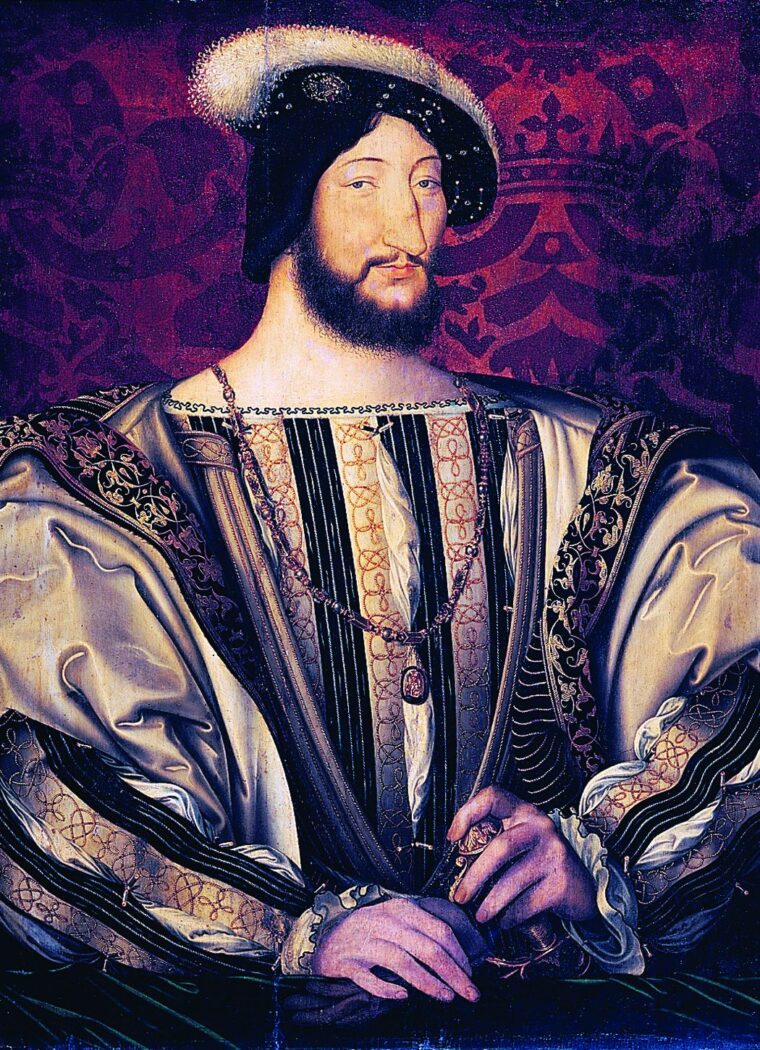
Success at Boulogne, Stagnation at Montreuil
Meanwhile, at Montreuil, the sorry situation was made even worse when Norfolk could not stop his troops from taking double their allotted rations, despite standing orders against personal hoarding. Even more damaging to morale, everyone had been forced to drink water, since beer supplies had run out 10 days earlier. Fortunately, the quartermaster in Suffolk’s newly established camp at Boulogne had enough beer to send a goodly amount from his supply base at Wimereux. This helped conditions in the English camp, but the situation outside Montreuil remained difficult. Norfolk lacked sufficient men and siege guns to completely surround and assault the walled town, forcing him to press his men so close to the enemy that they could trade insults with the French defenders. Even at that, there were discernible gaps in his line, making it possible for the French to slip supplies into the town.
Hampered by inadequate resources, Norfolk also suffered the disadvantage of facing an enemy that was unusually skilled at detecting any mining under its walls. Denied this favorite avenue to breach the town’s defenses, Norfolk resorted to diplomacy, entering into negotiations with the Montreuil garrison without first consulting Henry. Not surprisingly, the unauthorized action unleashed a storm of criticism. When Henry heard of the talks, he was outraged and demanded an immediate explanation from the duke. Norfolk was embarrassed, but replied with as much innocence as he could muster that his talks had been intended merely to test the enemy’s willingness to withstand the siege. Surprisingly, this mollified Henry, although he warned Norfolk that the duke should have cleared his strategy ahead of time with the king.
Henry ordered Norfolk’s 26-year-old son, the Earl of Surrey, who had just arrived in Calais, to bring the rear guard to Boulogne. Three days later, the earl marched into Henry’s camp, leading lightly armored horsemen, archers, pikemen, and gunners on foot, along with hundreds of noncombatants, including butchers, herdsmen, millwrights, coopers, smiths, armorers, mortar makers, surgeons, and priests. Henry greeted Surrey sitting astride a horse with his armor cut away to relieve the pressure on his afflicted leg. The bemused French commanders inside the castle marked Surrey’s arrival with an artillery barrage.
Once the rear guard was deployed to its assigned position, the newly energized Henry threw himself into the siege. Constantly improving his position, Henry ordered new earthworks built and ordnance redeployed (ultimately mounting 95 guns and 50 mortars), all the while lecturing his officers on the finer points of military procedure. Within three days, the heaviest of his siege guns began to inflict serious damage on the walls of Boulogne’s castle, giving Henry confidence that the town would soon be his.
The inclement weather, which had so bothered Norfolk, now began to bedevil the king as well. Violent thunderstorms immobilized the siege, forcing everyone to protect their food supplies while struggling to keep their equipment safe and quarters dry. Days of rain turned pathways into rivers of mud, eliminating any possibility of offensive action, and the enforced inactivity transformed the camp into a dreary mess as rampant boredom engulfed the troops. Tempers flared and morale sagged while carpenters worked diligently to improvise better living quarters for the king, adding impressive porches, overhangs, floors, and windows to his tent.
After the weather improved, renewed action was delayed by a shortage of dry powder. Not until early August were the English gunners able to renew the regular shelling of walls at the Siege of Boulogne. Once bright sunshine bathed the scene, Henry found it possible to enjoy again the drama of the siege. While he was never in any great personal danger, the renewed campaign helped the king to forget that he could barely walk. Also serving to improve Henry’s mood was the output of the mobile bakery. Many observers commented that Henry looked better than he had in years.
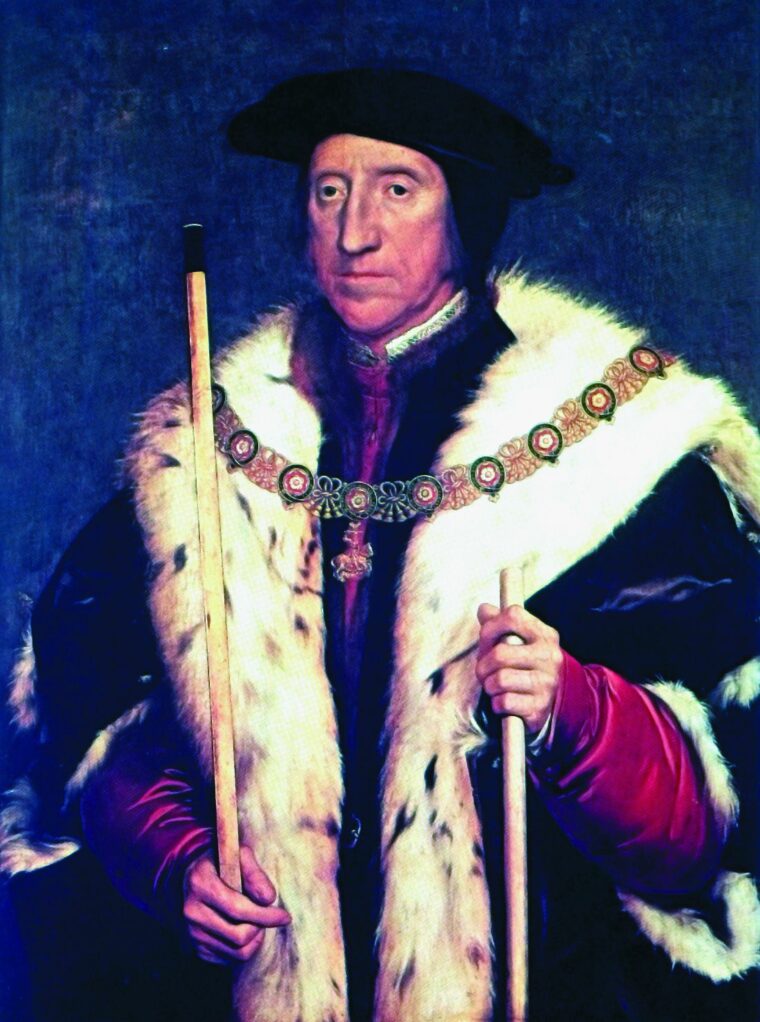
Conditions were quite different at Montreuil, where Norfolk and his troops endured serious hardships while the king hogged resources at the Siege of Boulogne. This forced Norfolk to rely increasingly on his 600-man Irish contingent for their vaunted skill at foraging and cattle stealing. Suffolk was more fortunate as his troops, better-supplied and -armed, managed to breach Boulogne’s high walls after firing a large number of rounds from their heavy siege guns, followed by seven days of bloody assaults by men-at-arms. The bedraggled French defenders, with the walls literally crumbling around them, finally agreed to surrender, and Henry entered the town on September 18 with Suffolk and Surrey to accept the formal surrender.
A Tense Strategic Position for King Henry VIII of England
For Henry, it was a replay of his September 1513 capture of Tournai. He exulted in the victory at Boulogne, picturing it as the equal of Edward III’s capture of Calais 200 years before. But Henry’s ally, Charles V, was not so enchanted by what was happening. He complained that Henry had allowed himself to get bogged down at Montreuil and Boulogne, breaking their agreement to march jointly on Paris. Charles V lost interest in continuing the war, even though he had captured Saint-Dizier, a royal fortress guarding France’s eastern approaches to Paris. Desperately short of money, Charles decided in September to abandon his march on Paris and conclude a separate peace with the French. Henry had known from the start that this was a possibility and he responded calmly at first to Charles’s decision before erupting with anger. He accused his erstwhile ally of treachery, despite having entertained peace overtures himself from Francis.
Henry worried that his armies, left alone in the field, would have to fend for themselves while French forces converging on Boulogne would soon outnumber his own. Worse yet, Henry suspected that he would soon face a French invasion across the English Channel. Norfolk’s situation was even more perilous. The countryside surrounding Montreuil had been stripped of edibles, leaving the duke’s men and horses near starvation. To underscore their plight, scouts confirmed that virtually every ear of corn and blade of grass had been consumed, all cows and chickens commandeered, and local rabbits hunted to near extinction. At least two dozen soldiers were dying each day, along with countless horses. To make matters worse, the fall rains were beginning again. Norfolk reported with grim satisfaction that the French defenders at Montreuil had been reduced to eating horses and cats.
Retreat from Montreuil
Forced to acknowledge the deteriorating situation at Montreuil, Henry assigned Norfolk’s son Surrey to his father’s command, with instructions to forestall relief of the French garrison. Despite Surrey’s zeal, the besieged town continued to hold out, prompting Norfolk to clamor even more loudly for substantial relief. Unable to ignore Norfolk any longer, Henry considered sending Suffolk with fresh reinforcements but decided against it, believing that this might provoke a pitched battle with the French dauphin, rumored to be approaching the area with a sizable force.
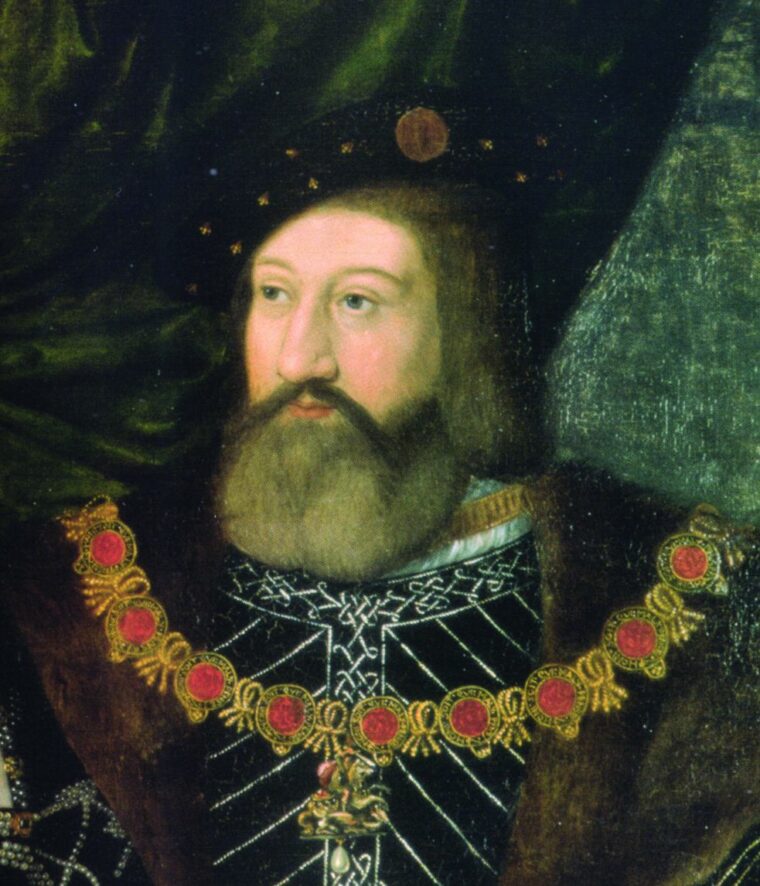
Unsure what to do, Henry invited Norfolk to confer with him at Boulogne, while Surrey was given temporary command at Montreuil. Left to his own judgment, the notoriously headstrong Surrey took the opportunity to make a daring attempt on Montreuil’s Abbeville Gate. It was a foolhardy initiative, and during the subsequent attack he fell, concussed from a shell burst near his position. Surrey’s squire and friend, Thomas Clere, dragged him still unconscious to safety but was mortally wounded while doing so. The English raiding party had no choice but to abandon the attack and retrieve its addled leader.
Surrey’s misadventure was reported immediately to Henry, but the king was too distracted by other fast-moving events to comment on his young favorite’s foolhardy actions. Henry was urged by his staff and the council to return to England as quickly as possible. A fair number also suggested that Norfolk be allowed to withdraw his forces from around Montreuil. Norfolk heartily agreed with this suggestion, and Henry gave his permission reluctantly. The meeting at an end, Norfolk returned to Montreuil to extricate what was left of his beleaguered army, retrieve his badly shaken son, and regroup with Suffolk at Boulogne.
Although the moment was tense, Henry staged a leisurely farewell, riding triumphantly through the streets of the battered town and taking numerous salutes before departing for Calais. Leaving Norfolk, Suffolk, Surrey, and Sir Thomas Poynings in charge of the town’s half-destroyed fortress, the king returned to England in passable triumph. Once back in England, Henry exhibited excellent spirits, reporting to one and all how pleased he was with the results of his efforts, despite the still-mounting cost of the war.
Henry’s celebration in London might have gone on for some time, except for word that Norfolk and Suffolk had disobeyed the king’s orders and withdrawn the bulk of their troops from Boulogne to Calais, where some of the men-at-arms had deserted upon discovering an outbreak of plague there. Furious, Henry voiced his displeasure. The Siege of Boulogne was his hard-won trophy, and he refused to give it up or have the honor of his army besmirched. Shouting for a secretary, Henry dictated an order directing sheriffs to pursue deserters. Those found were to be hanged on the spot in a swift display of the king’s wrath. Meanwhile, Henry stewed over what to do with his commanders in France, ordering the dukes to return immediately to their posts at Boulogne.
King Henry VIII on the Defensive
Despite the king’s wrathful admonishments, the first replies from the dukes cited the continuing danger to their position from the dauphin’s rapidly approaching army, supposedly 50,000 strong and ready to cut off the supply line between Calais and Boulogne. In their view, they had to fall back to Calais to preserve England’s remaining foothold in France. Norfolk and Suffolk concluded their report by adding lamely that Boulogne had not been abandoned, since Poynings was still there with 4,000 men.
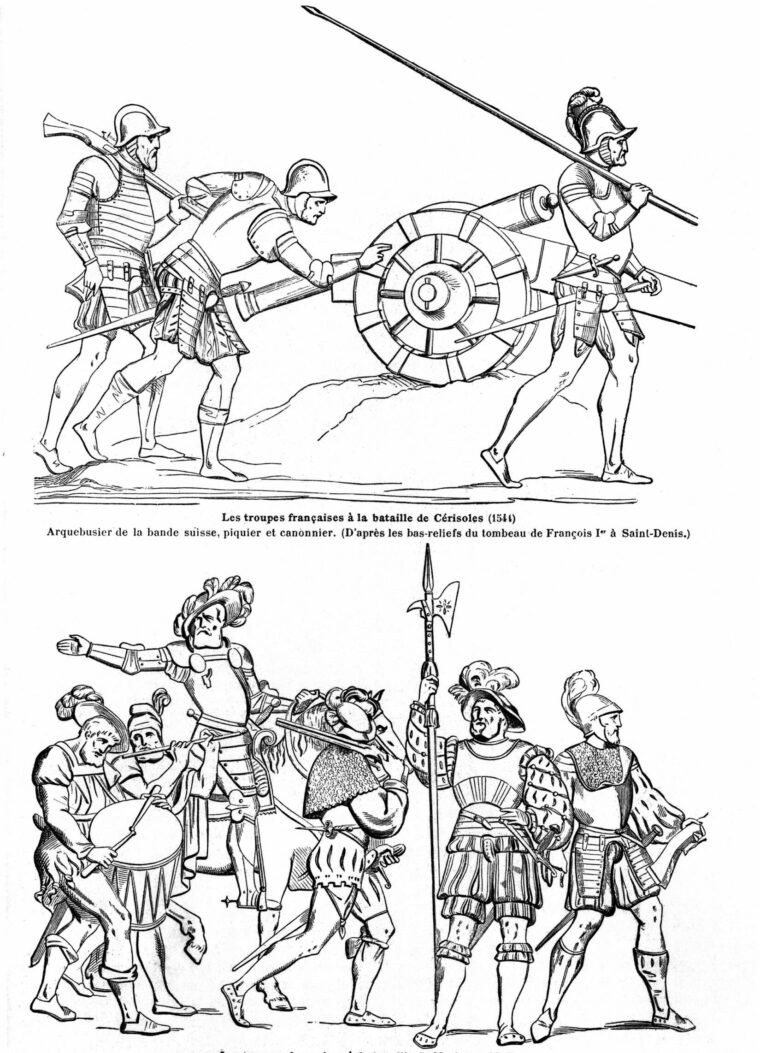
The much-feared French attack finally fell on Boulogne, and an enemy force fought its way into the lower town one night and began looting great quantities of supplies the English had left unguarded. Roused by the assault, the garrison mounted a counterattack, routing the distracted French and killing 600 of them. Poynings’s officers counted 800 of their own dead. When news of the assault reached London, Henry was shocked. Calling another secretary to his side, he dictated another letter to Norfolk and Suffolk, angrily wondering why they had withdrawn from Boulogne without presenting their decision to the council first.
Henry had an even larger worry that distracted him from punishing his two field commanders: how to obtain sufficient funds to continue his war with the French. The Privy Council made it clear to Henry that he was running out of money. Treasury tallies revealed that the cost of the French campaign was now three times the earlier estimate. At the current rate of spending, the war would bankrupt the treasury.
Although the French had been turned back at Boulogne, the fight had not gone out of them. Francis I, Henry’s long-standing adversary, announced his intention to invade England in the spring, believing that this would be the best way of forcing the English to give up Boulogne. Francis’s fleet, which by midsummer of 1545 numbered 150 ships, was concentrated at Le Havre. Told of the threat, Henry felt compelled to pardon both Norfolk and Suffolk and ordered them home to help organize the country’s coastal defenses.
Fortifying the Channel
The threat of invasion was taken seriously in England, and tensions ran high. The stretch of English coastline between Gravesend and Portland boasted 26 castles and fortified positions, each garrisoned with a full complement of men-at-arms and gunners. English spies reported that Francis planned to make Portsmouth his bridgehead. Henry decided to establish his headquarters there, while Hertford covered the north and Norfolk kept watch on the Lincolnshire and Suffolk coasts. One-eyed Lord Russell was posted in the west, with Suffolk commanding in Sussex and Kent.
Henry issued licenses to numerous ship owners to serve as privateers in the Channel, slipping out to seize whatever French ships they could find. The semiofficial collection of 50-ton ships, armed with light guns and operating alone or in pairs, relied on speed to overtake slower moving French merchantmen. As a first line of defense, Henry planned regular patrols by his royal fleet of 60 ships, while the second line was represented by the series of forts along the coasts. These fortifications, with low but thick walls, presented poor targets for enemy warships while providing a steady platform for English guns to fire at attackers.
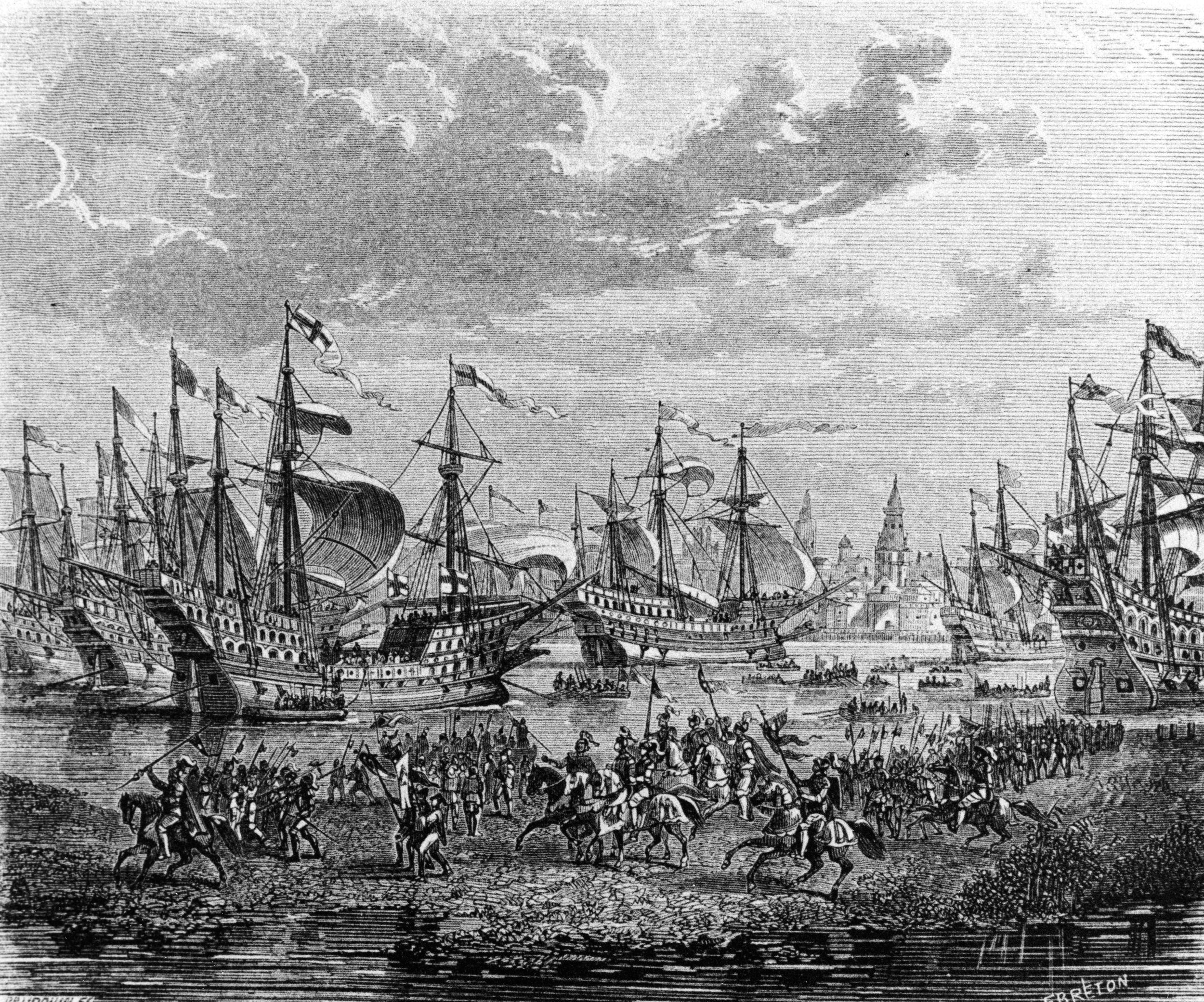
During offshore maneuvers of the Portsmouth-based fleet, one of Henry’s finest ships, the Mary Rose, suffered a bizarre accident. Henry and a number of his courtiers were at dockside, watching with unbelieving eyes as the ship, carrying a crew of 700, caught a shore breeze and keeled over dangerously. Water began flooding into her lower gun ports as cannons crashed headlong across her slanting decks, aggravating the ship’s list. Within minutes the Mary Rose sank, leaving only the tops of two masts above water while fewer than three dozen survivors swam for their lives. Henry could hear the terrible cries of crewmen trapped below decks as he looked on helplessly from Southsea Castle.
The English and French fleets made repeated feints at each other off Shoreham, but little happened except the exchange of ineffective cannonades. The summer weather was hot and the wind was light, and the heat, bad food, and fevers did deadly work on the overcrowded ships. Many crewmen in both fleets died, with the French experiencing the greater loss. Failing to dominate the Channel or engage the English fleet, the French admiral eventually broke off the action and withdrew his ships to Le Havre, ending the threat of invasion after only a month.
Surrey’s New Command
In France, Lord Poynings, recently elevated to baron, died unexpectedly at Boulogne on August 18. His passing was barely noticed as the ailing Suffolk, one of Henry’s oldest friends, died four days later on a trip to Guilford. Suffolk’s death was a severe blow to Henry, who was not well himself. The king found time to make command assignments in the midst of Suffolk’s funeral service at Windsor, transferring Lord Grey from Guisnes to Boulogne and having Surrey assume Grey’s position at Guisnes, eight miles south of Calais.
Excited by his new opportunity, Surrey set to work reorganizing the English forces at Guisnes, obtaining permission to move his men outside the walls of the town, where they could be used more aggressively. He launched an attack on the garrison at Ardes in the first week of September, and his forces overwhelmed the French and killed the enemy commander. The Privy Council, reacting favorably to Surrey’s achievement, issued an order placing him in charge at Boulogne. Henry further rewarded the earl with the title of Lieutenant of the King on Sea and Land, a great honor for someone who had just turned 28. Surrey displayed surprisingly good administrative skills in his expanded responsibilities, seeing to it that his soldiers were paid regularly and that the most flagrant of the camp followers were dispersed. A new sense of order began to prevail.
Surrey managed to keep the French off balance by foraging and skirmishing aggressively. He also provided Henry with long, detailed accounts of the army’s campaigns, thus feeding the king’s illusions of military glory. Meanwhile, the once-timid council wrangled with Henry over the wisdom of continuing to hold onto Boulogne, whose repair and defense were placing a heavy burden on the seriously over-stretched treasury. The cost of the combined campaigns in Scotland and France had grown to more than two million pounds, and the government’s reliance on foreign borrowings had driven up interest rates to 13 percent. To offset the mounting debt, Henry devalued the English currency again, which only pushed prices and interest rates higher.
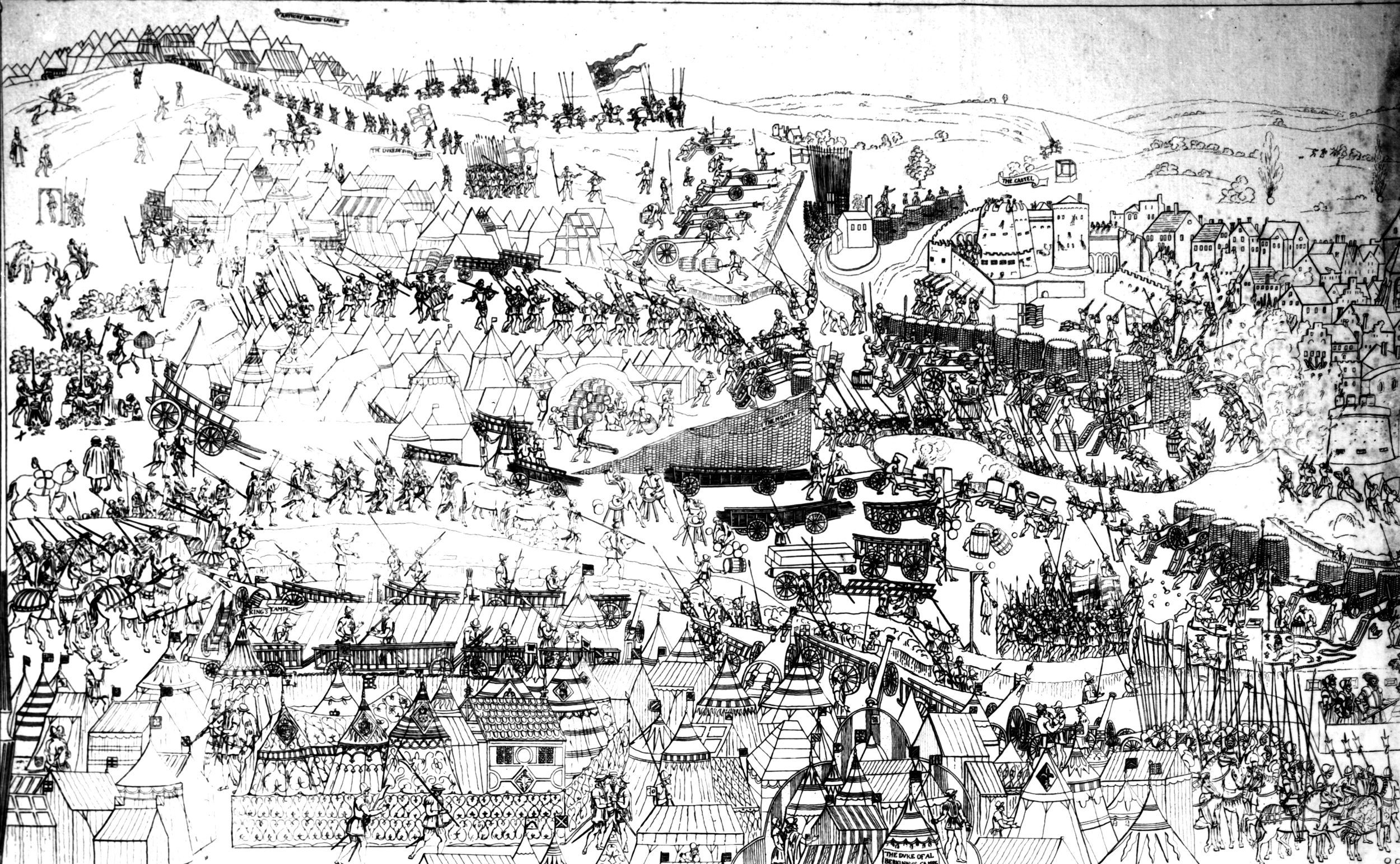
An Advance on Chatillon
At this point in the growing turmoil, the council wrote to Surrey asking for his views on the situation at Boulogne and hinting that he should find some excuse to abandon the town. Unfortunately for the council, Surrey seemed not to understand the financial crisis, believing like Henry that finances took care of themselves in the long run. Worse still, Surrey seemed to believe that he could afford to act independently of the council, counting on the king to support him.
Deeply concerned, Norfolk wrote a private letter to his son, cautioning him (from long experience with Henry) not to encourage the king to keep Boulogne and warning him that his service to the throne would earn him small thanks. Surrey ignored his father’s advice. In his next letter to Henry, which the king shared with Norfolk, the earl exuberantly described Boulogne as the most impressive jewel in the king’s crown.
Ignoring all warnings from the council or his father, Surrey continued his raids, which allowed Henry to persuade Parliament in late November to enact another subsidy for the war effort. Gratified by Surrey’s results, the king accepted his recommendations to promote several of the earl’s favorite officers. Emboldened, Surrey sent an aide to London to discuss a plan to capture the nearby fortress of Chatillon and close off Boulogne’s supply route to the Channel. Henry quickly gave his permission, and in the early hours of January 7, 1546, Surrey led 2,000 infantrymen and 600 mounted knights out of Boulogne toward Chatillon. The French, getting advance word of the intended attack, assembled a larger force to encircle Surrey’s force and destroy it.
A Fall from Grace
Surrey had neglected to assess the likelihood of a counteroffensive as he advanced almost gaily toward Chatillon. When a sizable French force appeared on the route, Surrey responded to the challenge by ordering his front line of infantry to charge. The French gave ground, which prompted Surrey to order his cavalry forward. The English knights galloped in, slashing and spearing until they came to the enemy supply wagons. There they dismounted and occupied themselves with looting. While they were thus engaged, more French infantry came on the scene and advanced on the unprotected frontline English infantry. In the confusion, Surrey’s second line of infantry came up behind the first, which it mistakenly believed was falling back, only to be attacked in turn by the French cavalry. The English infantry fled in disorder.
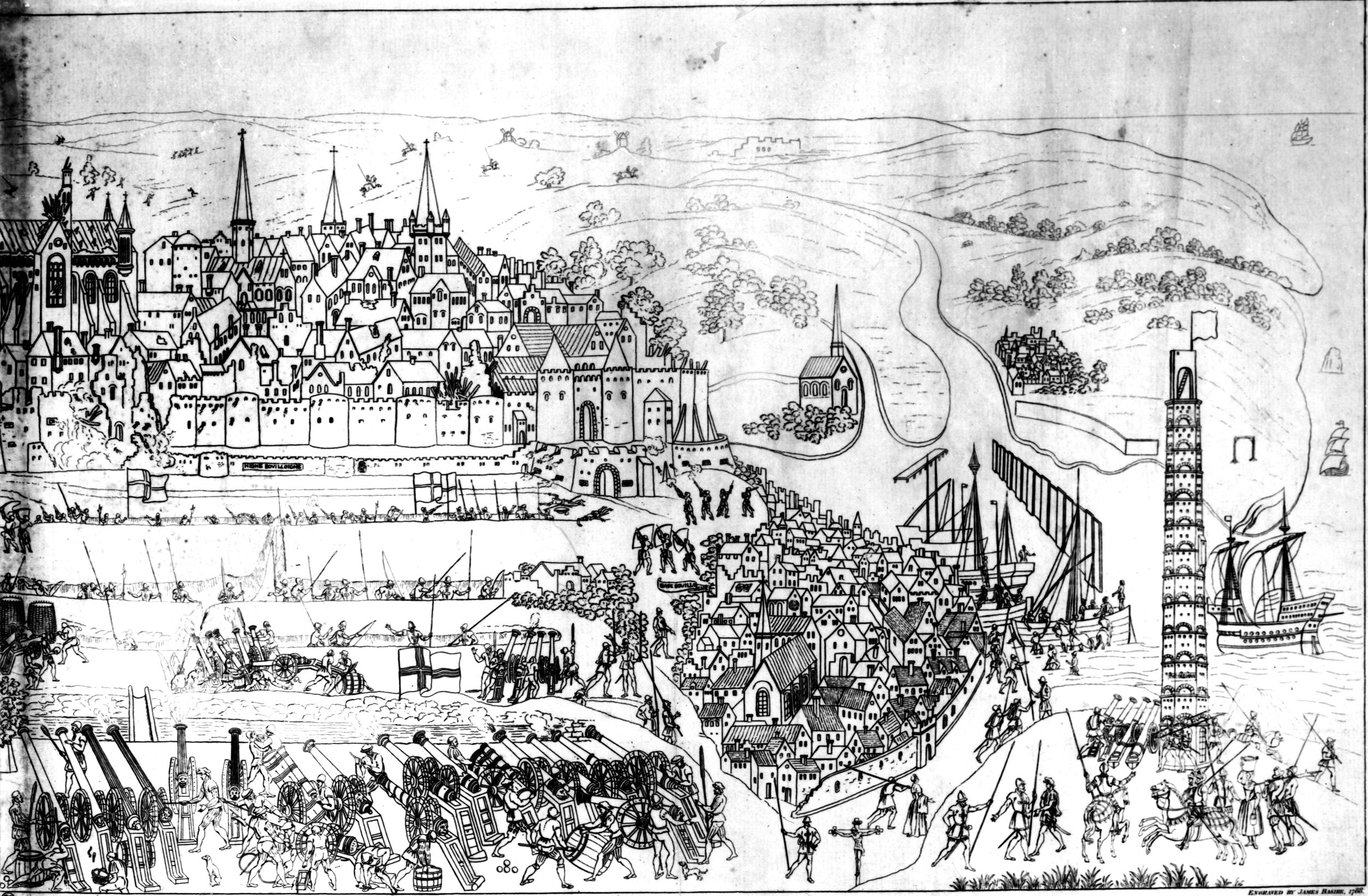
First reports told of over 200 men being killed in the botched engagement, including 14 captains. Even more startling and ignominious was the news that two English battle standards had fallen into French hands. Word of the debacle at Chatillon reached Henry and the council before Surrey could make his own exculpatory report, which blamed the defeat on the disappointing performance of the infantrymen. When the council saw that Surrey was denying full responsibility, some members became so infuriated that a letter of rebuke was sent immediately to the earl. Henry, in contrast to the highly agitated council members, was remarkably philosophic about the outcome of the battle. He did agree, however, to send Hertford back to France to investigate Surrey’s leadership decisions.
Surrey was grateful for Henry’s support, but events behind the scenes indicated that the king had decided to relieve him of command. The first overt signal of a change occurred in the first week of February, when Surrey was surprised to learn that his reinforcements were to be under the command of Hertford, who had been given the equal rank of lieutenant general. The situation deteriorated further in early March when a report from one of the king’s agents at Calais complained that supplies destined for the garrison at Boulogne were falling into the wrong hands. This was the last straw for the council, and Surrey was demoted to captain of the rear guard.
Contrary to expectations, Surrey behaved well in Boulogne while awaiting Hertford. In mid-March, he reported a victory over the French in a skirmish near Etaples. Once the diminished earl accomplished the transfer of command, he returned to England to make a final report to the king and the council. Dutifully, Surrey arrived at Whitehall within days, but it took a full week for the king to find the time to receive him. While cooling his heels, Surrey was summoned by the council to answer a charge of indiscreetly disputing Scriptures with a group of young courtiers. It was hardly a hero’s welcome.
A Legacy of Debt: Aftermath from the Siege of Boulogne
A peace treaty with France was signed on June 7, 1546, and Henry agreed to sell back all his French territory within eight years’ time. Meanwhile, a nasty dispute with the Norfolk family over bogus charges of treason impelled the king to throw both Surrey and Norfolk into the Tower of London. On January 19, 1547, Surrey was beheaded. Norfolk narrowly escaped a similar fate when the king suddenly fell ill that same week. Henry’s habitual overeating, heavy drinking, chronic health issues, and the stress of political maneuvers at court combined to bring him low. Confined to bed, the monarch lapsed into and out of consciousness before dying in the predawn hours of the 28th. Two months later, Henry’s archrival, Francis I, also passed away.
Over the next 11 years, Henry’s three surviving children—Edward, Mary, and Elizabeth—succeeded in turn to the throne. Each struggled with the burden of their father’s debts. The principal culprit for their difficulties was the ruinous cost of Henry’s last war in France, which he had begun as a way of distracting himself, his court, and the public from the sorry outcome of his fifth marriage. While Henry enjoyed leading his army in the field, the diversion proved costly beyond imagining. Henry’s military misadventure brought England to the brink of bankruptcy, and in 1550—four years sooner than the treaty required—King Edward VI sold Boulogne back to the French and lost forever his nation’s last toehold on Gallic soil.
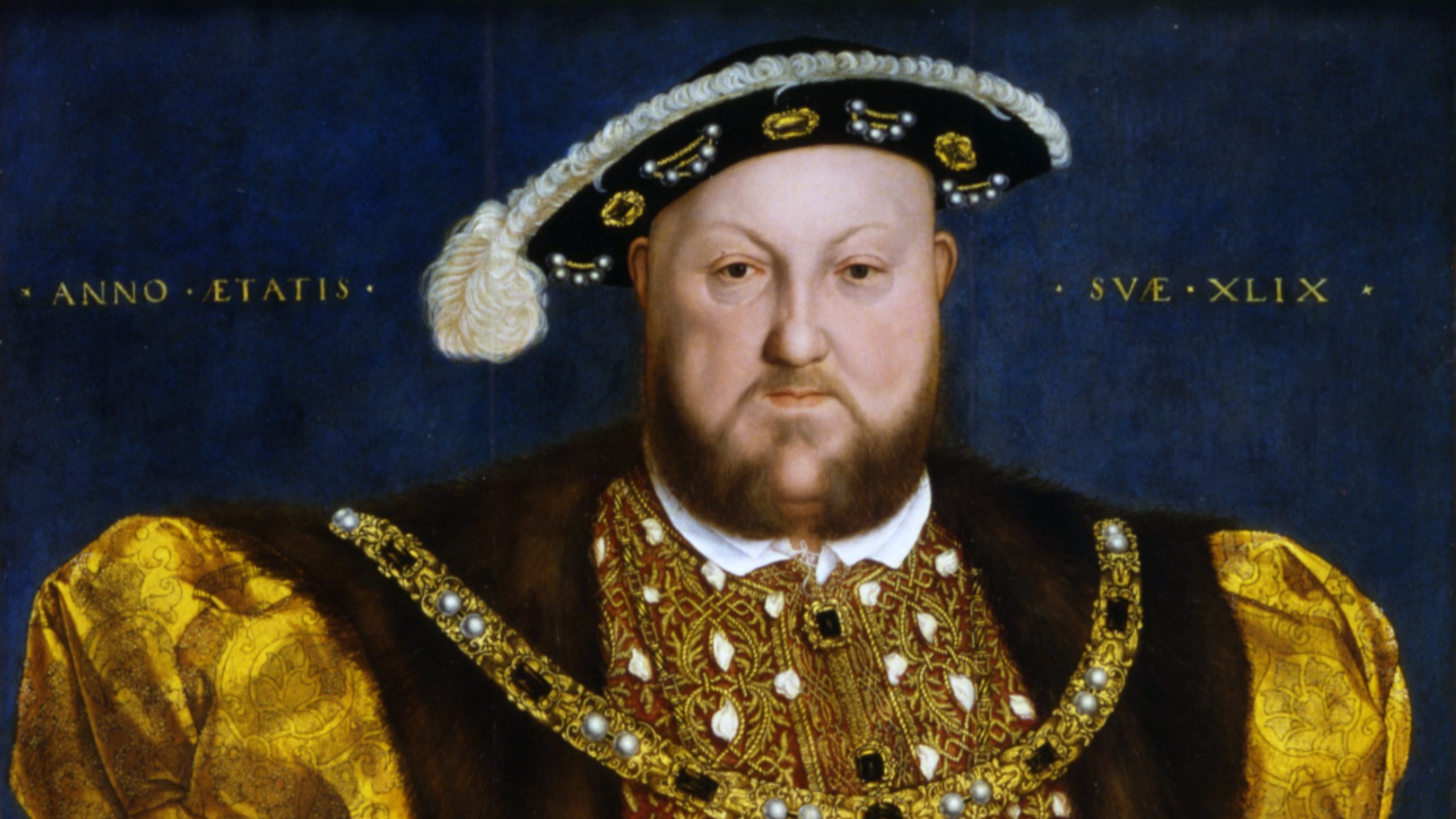
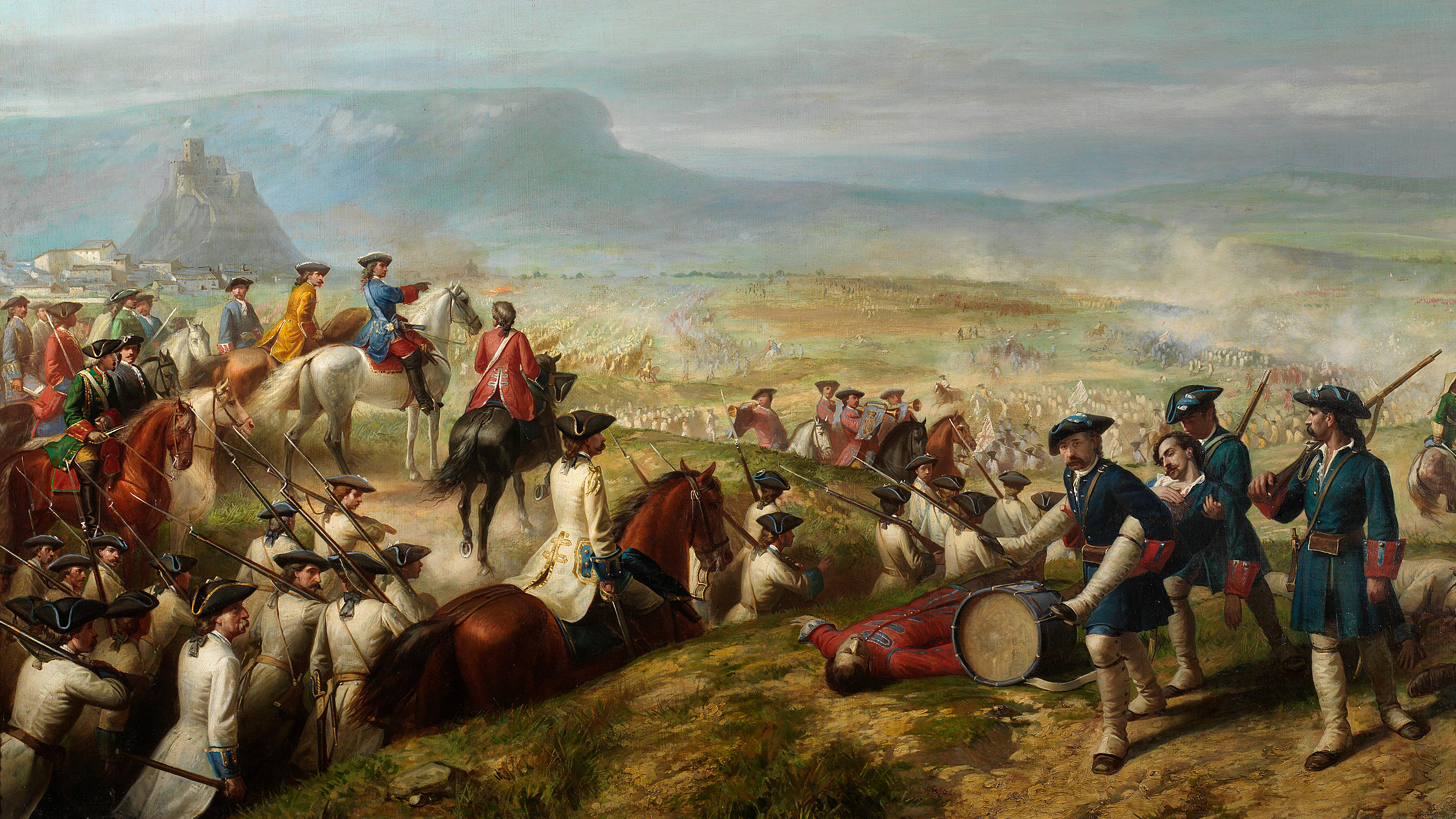
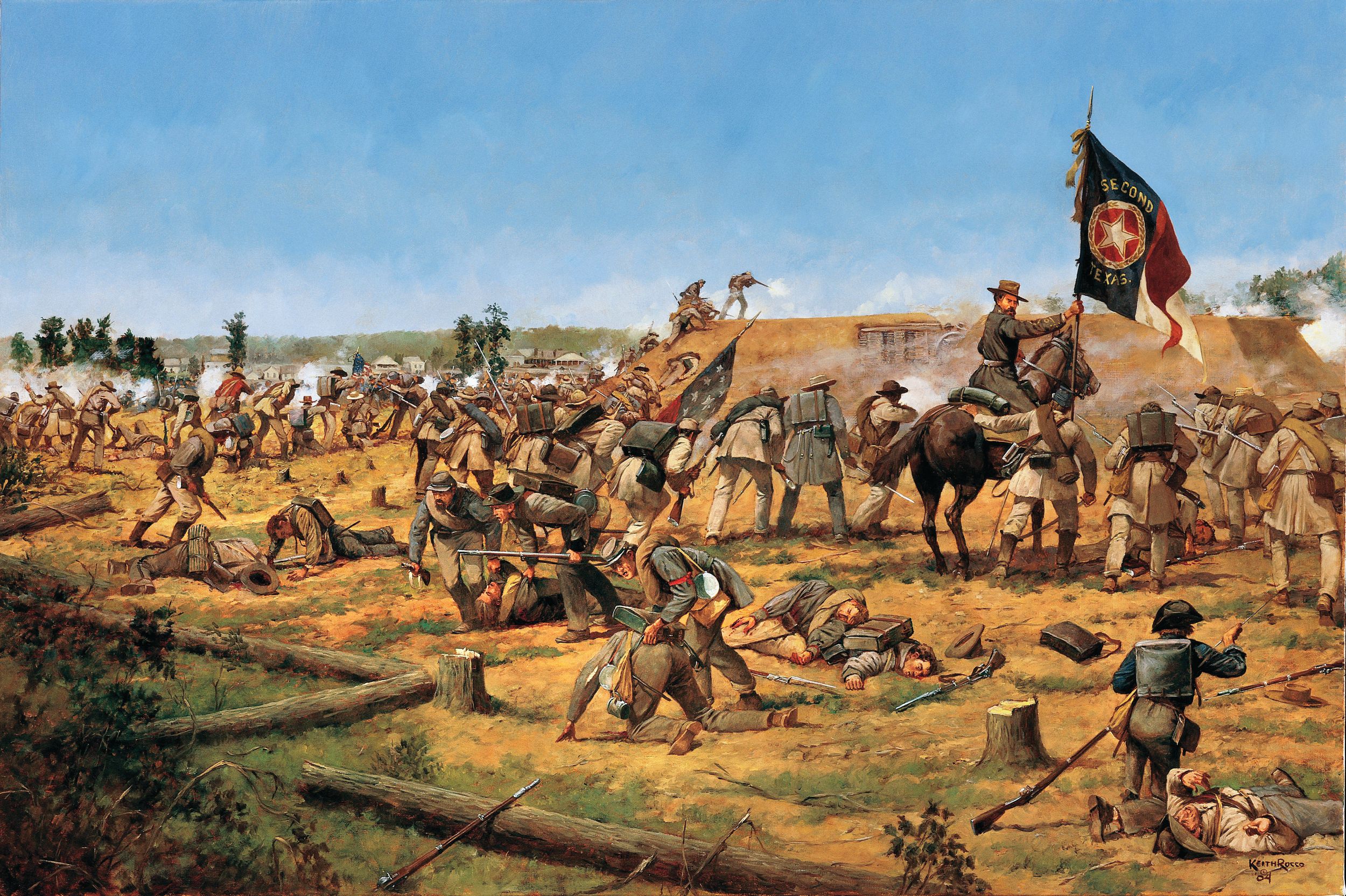
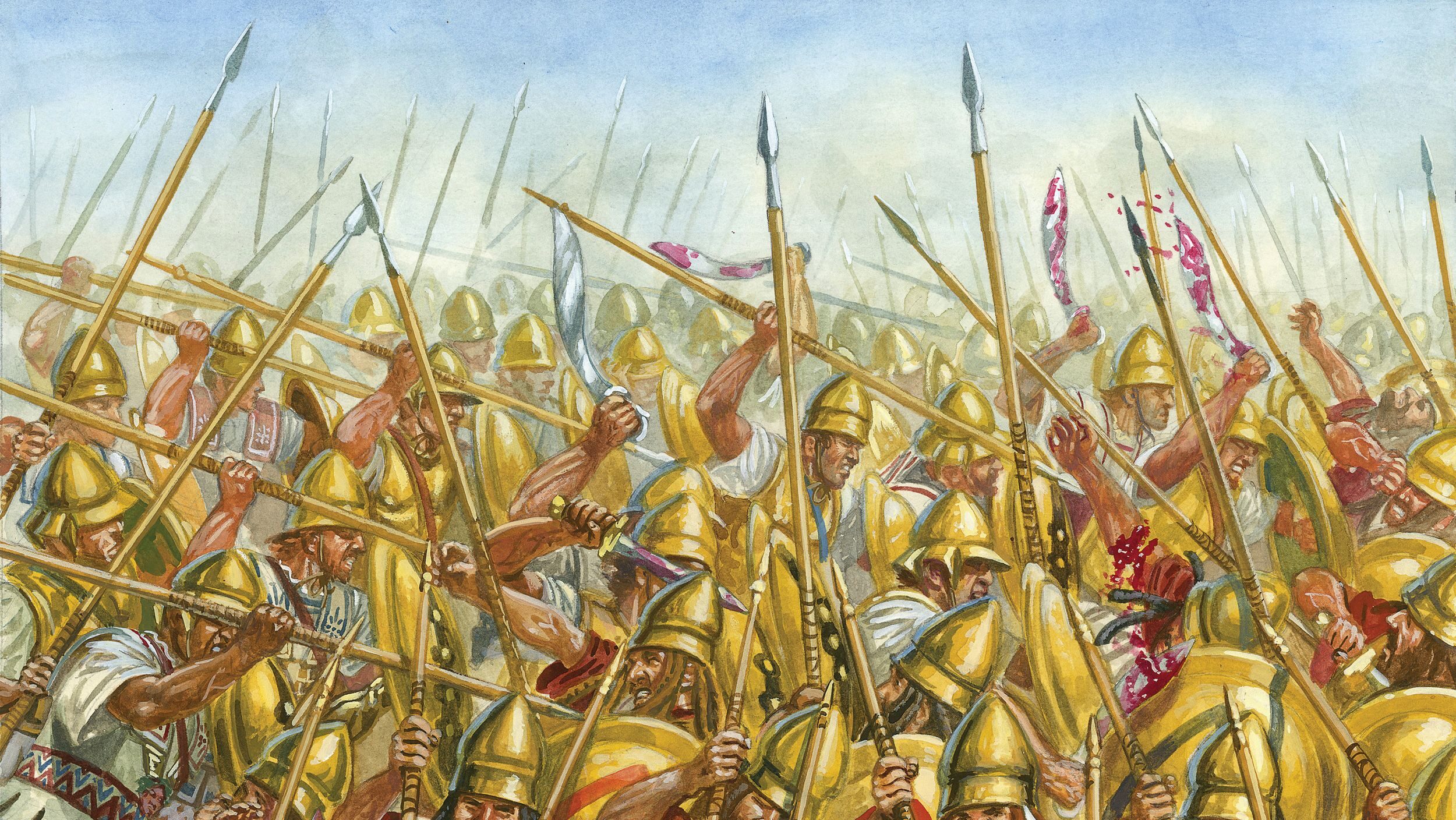
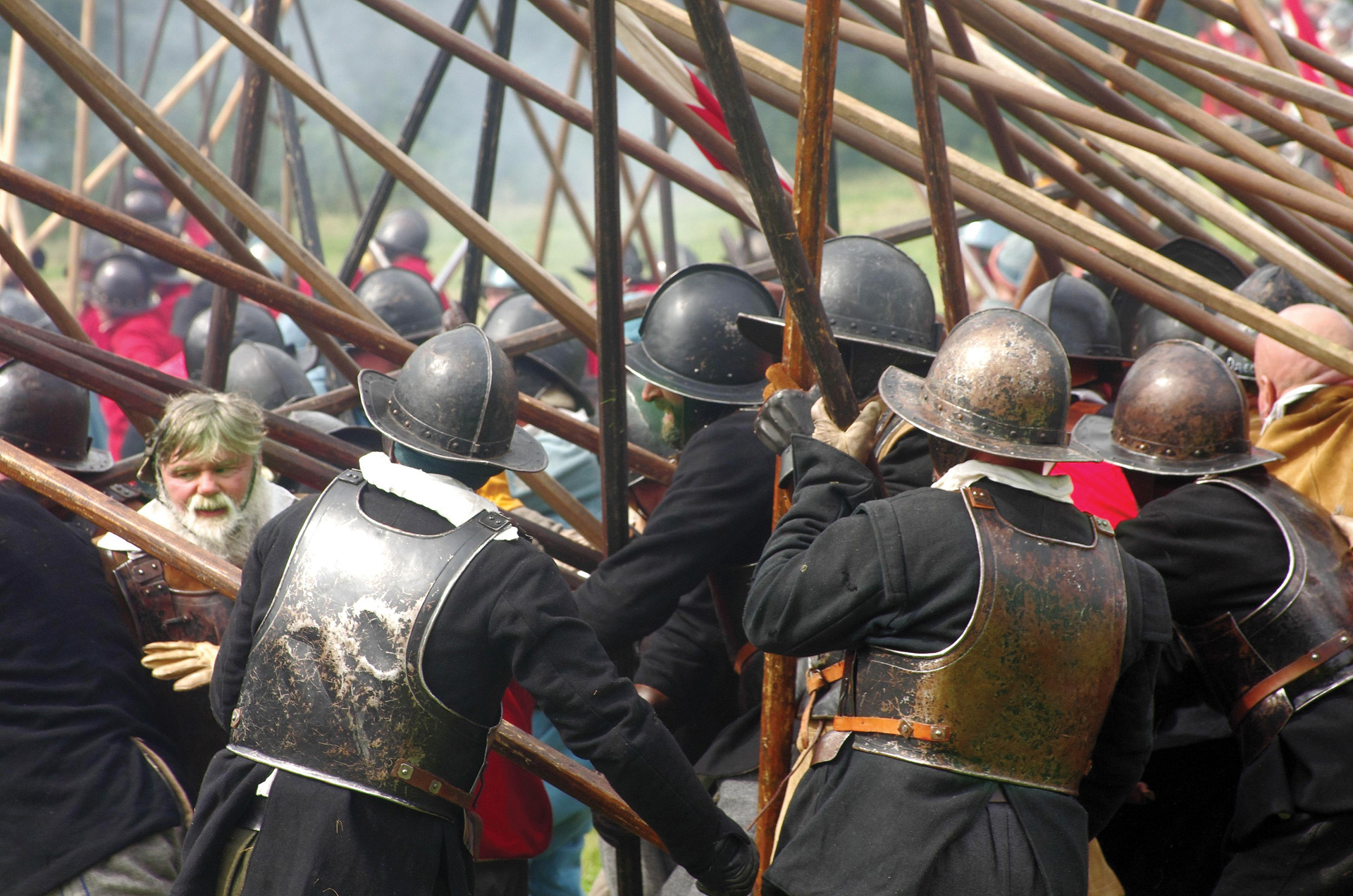
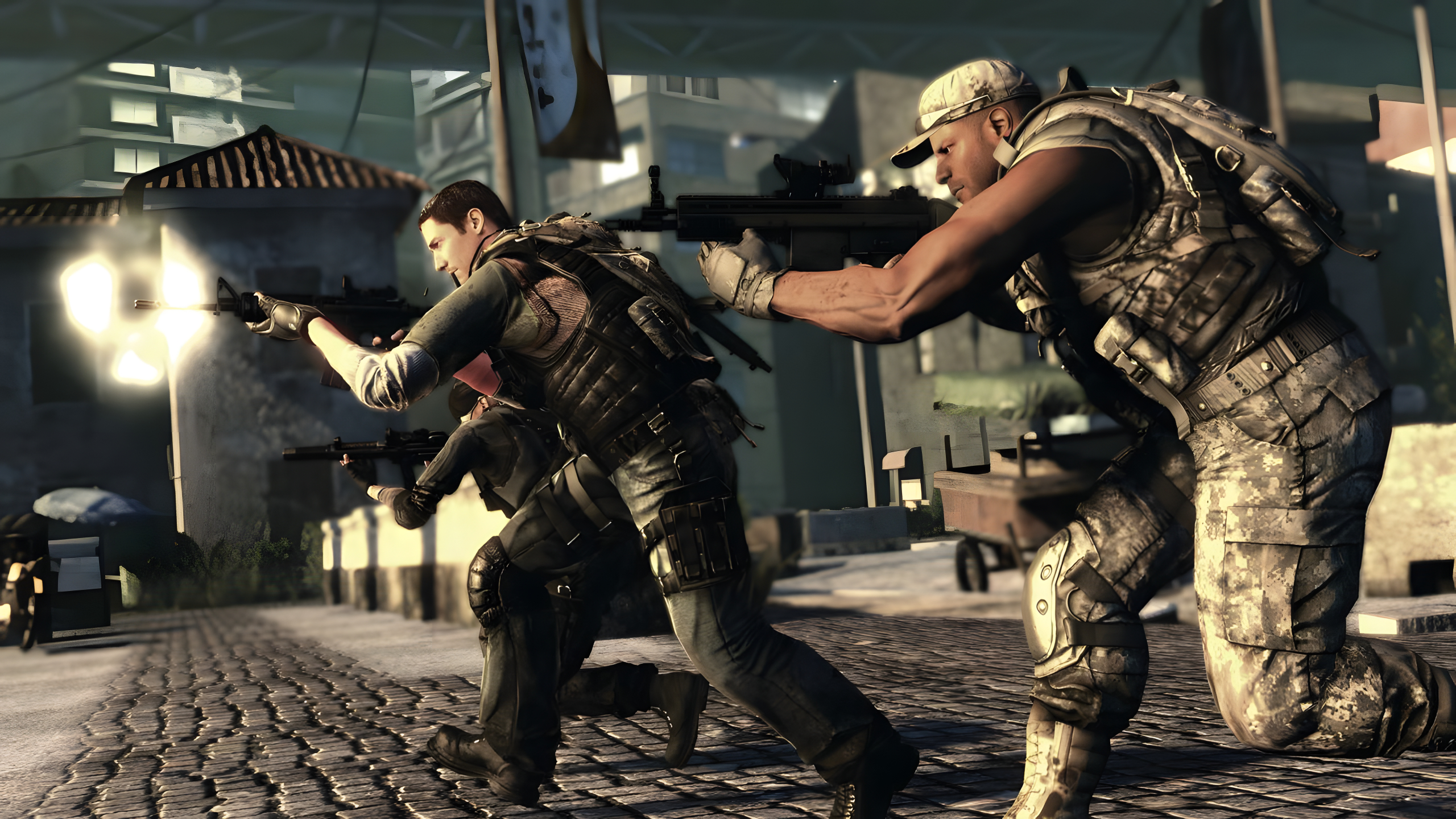
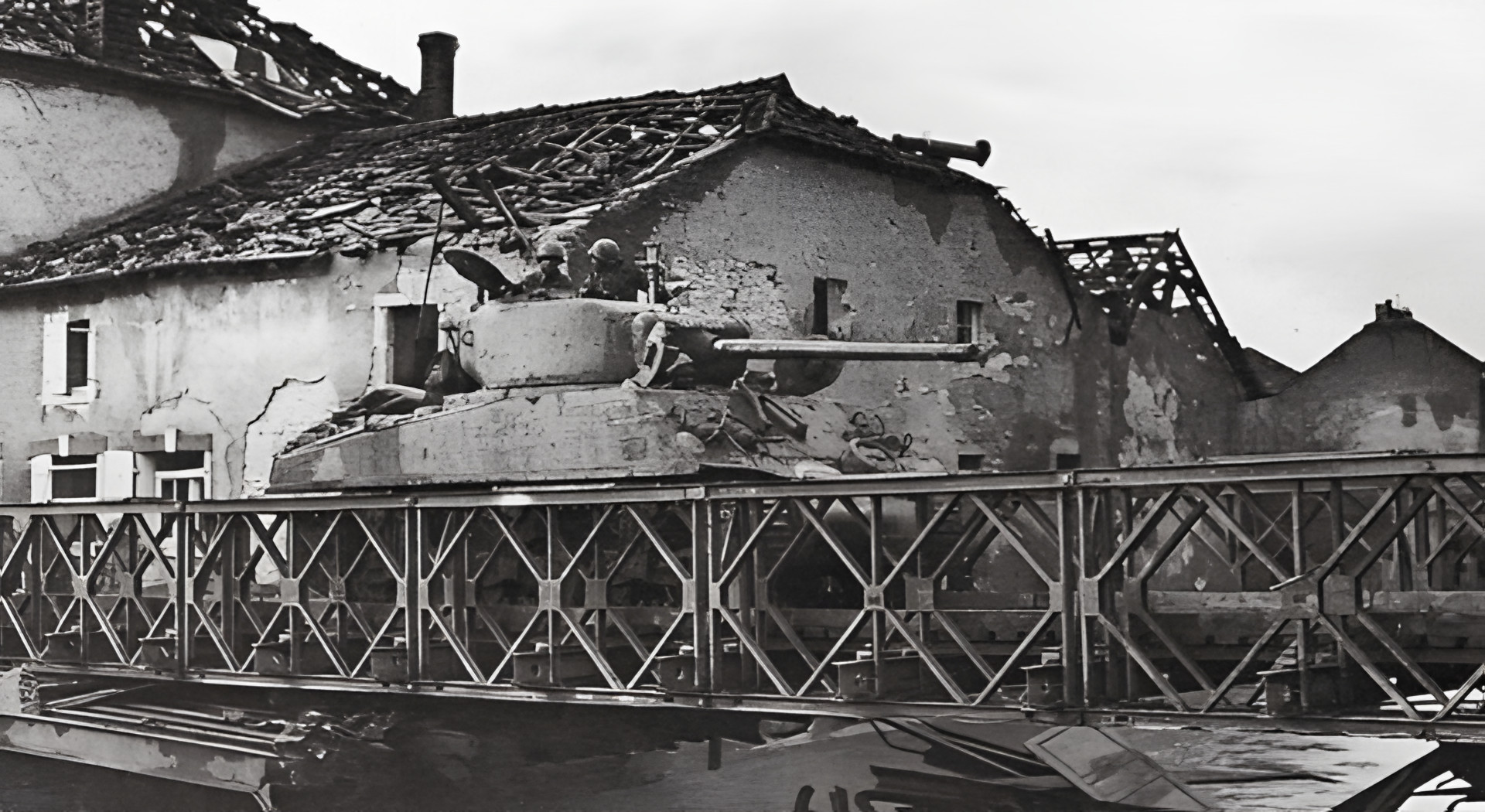
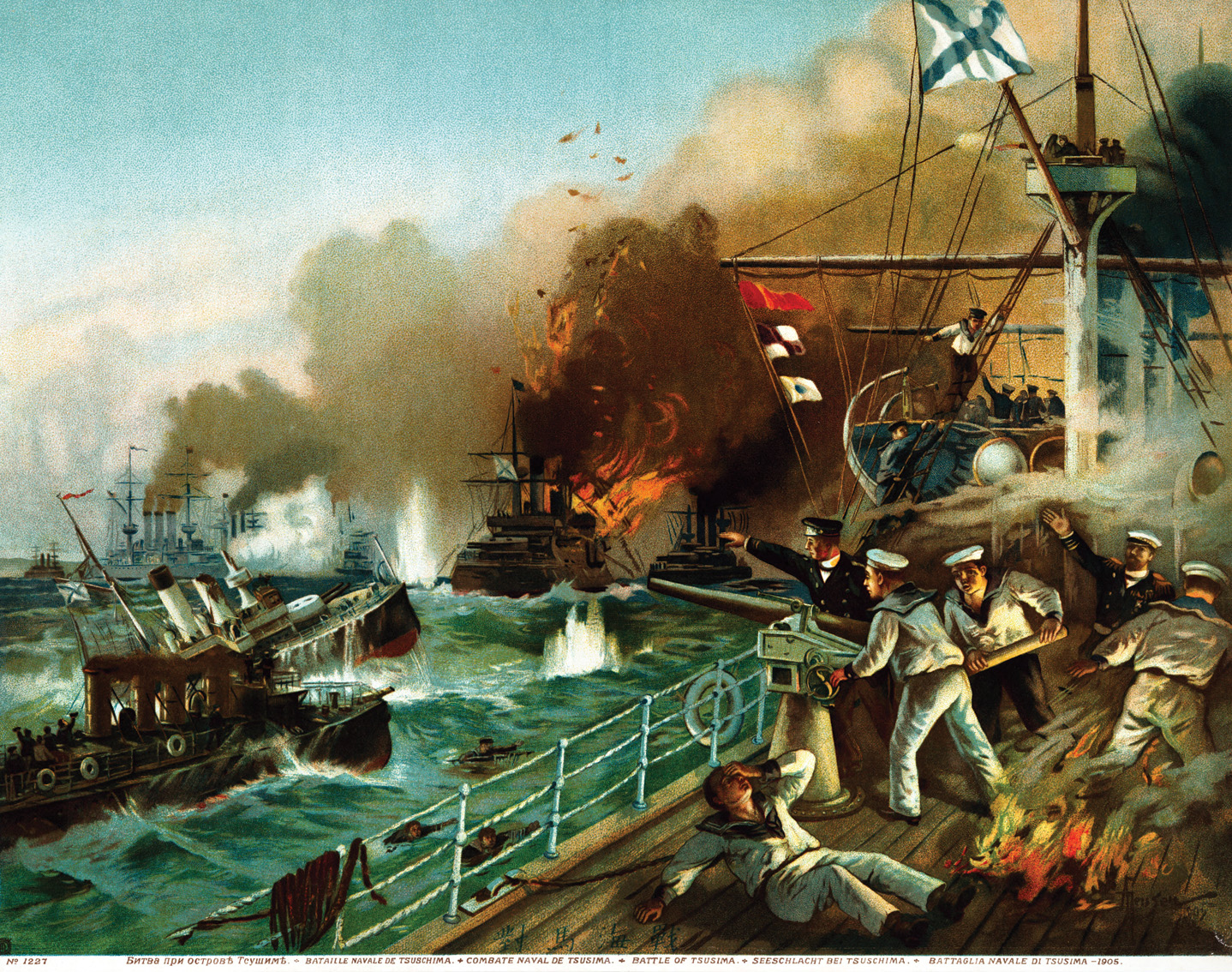
Join The Conversation
Comments